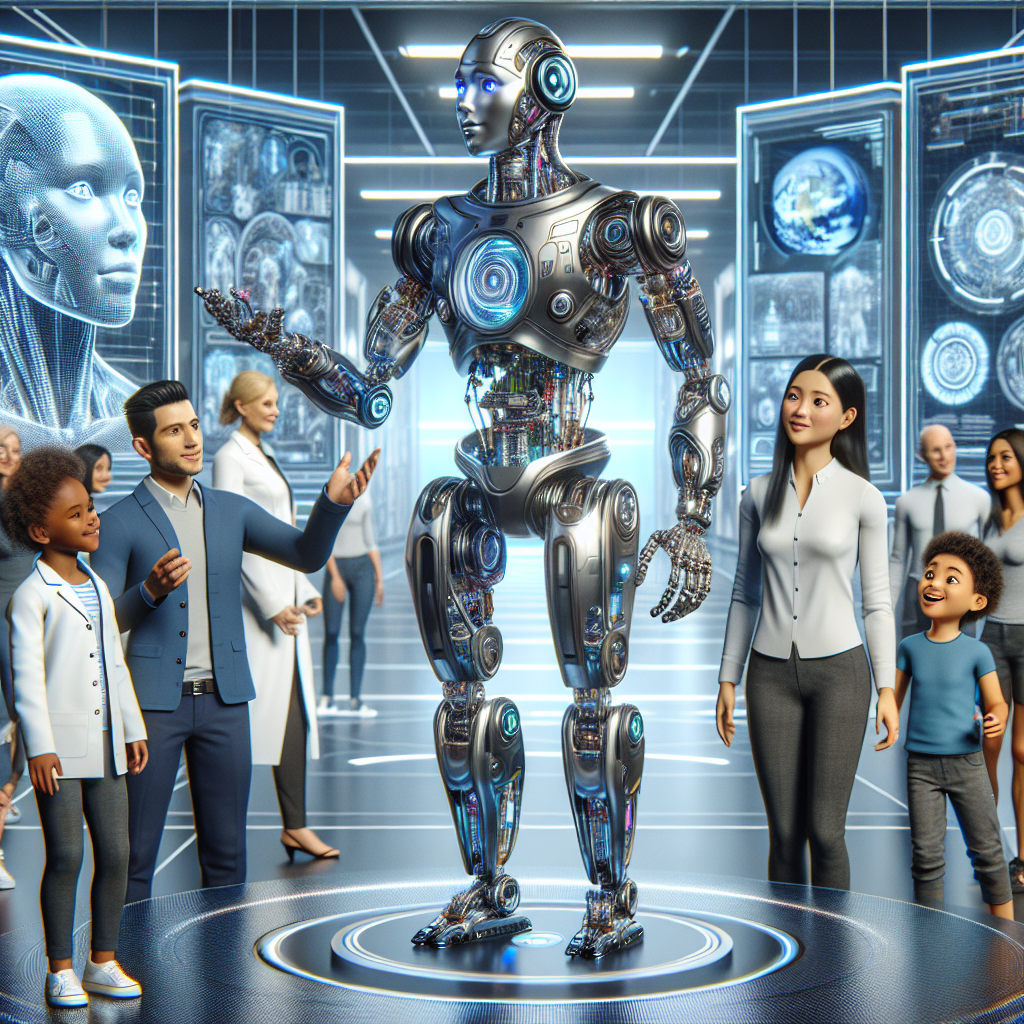The Rise of Humanoid Robotics: A Deep Dive into Technological Evolution and Its Implications
The field of robotics has never been as intriguing as it is today, with innovations pushing the boundaries of what these mechanical companions can do. Humanoid robots, in particular, are stepping out of science fiction and into our real world, embodying forms that mimic human appearance and capabilities. This transformation is fueled largely by breakthroughs in artificial intelligence (AI) and machine learning, where robots are not just programmed to perform tasks but are learning to understand and interact with the human world more intuitively.
Humanoid Robotics: Engineering Empathy
One might wonder, why the humanoid form? The answer is as practical as it is philosophical. Our world, with its doors, tools, and vehicles, is designed for bodies like ours. Humanoid robots naturally fit into this environment, able to manipulate the same objects and navigate the same spaces as we do. Furthermore, there’s an undeniable psychological aspect: interacting with a figure that walks, talks, and gestures like us can be more intuitively satisfying than dealing with a box on wheels, no matter how smart it might be.
What truly electrifies the narrative around humanoid robots is their increasing ability to learn and adapt. Companies like Boston Dynamics have long been at the forefront of developing robots that can handle complex physical tasks—from navigating rugged terrain to performing backflips. Now, advancements in AI are breathing new intellectual life into these mechanical bodies.
The AI Infusion: A Brain for the Metal Brawn
AI's role in the evolution of humanoid robots cannot be overstated. Modern robots leverage AI to enhance their decision-making processes. For instance, the interplay between AI models and physical robotics allows robots to interpret verbal instructions, identify objects, and execute complex tasks. These capabilities were highlighted in the display of robots like Figure 01, which utilizes OpenAI’s language model to engage in real-time dialogue and task execution—a leap towards more autonomous, helpful robots.
As AI continues to evolve, the integration with robotics grows more seamless. The synergy between hardware capable of delicate, precise movements and software that can process and analyze vast amounts of data in real-time is leading to unprecedented levels of functionality in humanoid robots.
Manufacturing and Beyond: Real-World Applications
The applications of humanoid robots are vast and varied. From industrial manufacturing, where robots like those from BMW and Tesla are streamlining operations, to more personal interactions in settings like therapy and rehabilitation, facilitated by companies like Fourier Intelligence Robotics. These robots are not just laborers; they are becoming partners in tasks that are either too dangerous, mundane, or precise for humans to execute consistently.
In the world of logistics and warehousing, humanoid robots are poised to play pivotal roles. Agility Robotics and similar companies have developed robots that can navigate the isles of warehouses, pick and sort products, and manage inventories efficiently—all tasks that are pivotal in today's fast-paced consumer market.
Safety and Ethical Considerations: Navigating the New Norm
With great power comes great responsibility, and the rise of humanoid robots is no exception. As these robots become more integrated into everyday life, issues of safety and ethics bubble to the surface. Ensuring these robots can operate safely around humans without unintended harm is paramount. Moreover, as they take on roles that involve personal data, privacy concerns must be addressed diligently.
The conversation also extends to the workforce. While robots are seen as solutions to labor shortages and can perform hazardous jobs, there's an inevitable impact on employment patterns. The narrative isn't about robots taking over jobs but rather reshaping the landscape of work, opening new opportunities for human workers to engage in more creative, less risky, and high-value tasks.
Looking Forward: A Human-Robot Cohabitation
Future projections suggest a world where humanoid robots are not just niche gadgets but everyday utilities. The transition from simple mechanical tools to entities that can interact, learn, and make autonomous decisions heralds a new era in technology. As we stand on this brink, the potential for humanoid robots to enhance human life, extend our capabilities, and take on challenges in environments too perilous for human beings shines bright.
In conclusion, the trajectory of humanoid robotics is steeped heavily in both technological advancement and human-centric design philosophy. As AI propels these machines to higher realms of autonomy and capability, their integration into society will likely be one of the defining narratives of modern technology. The future beckons with promises of collaboration, enhancement, and transformation, heralded by the silent steps of humanoid robots among us.
For further reading on advances in AI that fuel these technologies, visit IEEE Spectrum’s Robotics section.
As we delve deeper into this technological epoch, our understanding and ethical engagement with these beings will not only influence their development but also the very fabric of our daily lives. What remains clear is that the age of humanoid robots is here, and it is redefining the possible, one algorithmic step at a time.
